There are many questions about the control of self-driving cars. For example, steering, specific interaction with the vehicle, is the incoming steering angle or strength? Is braking brakes informed by the IPC how much effort the hardware has, or is it smart to the specific percentage of braking?
To achieve these control instructions, first of all, there is a great relationship with the chassis assembly components of the reference vehicle. To understand the interaction with the various components of the vehicle chassis, it is necessary to understand these control components.
Remote control execution
Simply put, wire control execution includes wire control, steering and throttle. On some high-end cars, the suspension can also be controlled by wire. Braking is the hardest part of the line control execution.
1 line control throttle
The throttle-by-wire is quite simple, and it has been used in a large number of applications, namely the electronic throttle, where all vehicles with cruise control are equipped with electronic throttle. The electronic throttle uses a wire harness (wire) instead of a cable or lever. A micromotor is mounted on the side of the throttle and the motor is used to drive the throttle opening.
Electronic throttle control system is mainly composed of accelerator pedal, pedal displacement sensor, ECU (electronic control unit), data bus, servo motor and throttle actuator.
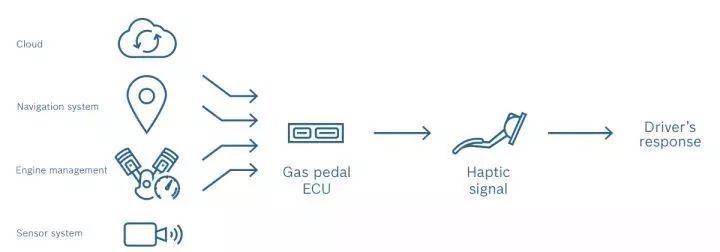
The displacement sensor is mounted inside the accelerator pedal and monitors the position of the accelerator pedal at any time. When the change of the accelerator pedal height position is detected, this information will be sent to the ECU in an instant. The ECU will perform calculation and processing on this information and the data information from other systems, calculate a control signal, and send it to the servo motor relay through the line. Servo The motor drives the throttle actuator and the data bus is responsible for the communication between the system ECU and other ECUs.
In adaptive cruise, the motor is controlled by the ECU in the ESP (ESC), which controls the opening and closing range of the intake valve and finally controls the vehicle speed.
2-wire steer
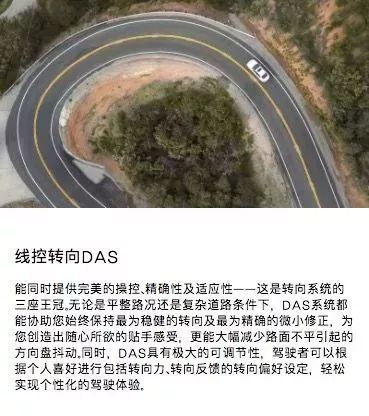
Nissan's Infiniti Q50 is
The first mass production vehicles using steer-by-wire steering
The steer-by-wire steering has also been practically applied. This is Nissan's Infiniti Q50. The actual current electronic power steering (EPS) is very close to the steer-by-wire steering.
The main difference between EPS and steer-by-wire is that the steer-by-wire has cancelled the mechanical connection between the steering wheel and the wheel. The sensor obtains the steering angle data of the steering wheel. Then the ECU converts it into specific driving force data and uses the motor to drive the steering wheel. Turn the wheel. The EPS increases the steering force according to the driver's corner.
The disadvantage of steer-by-wire steering is the need to simulate the force feedback of a steering wheel. Because the steering wheel is not connected to the mechanical part, the driver does not feel the resistance from the road surface conduction and loses the sense of road. However, on the unmanned vehicle, there is no need to consider this. . On the Q50L, the steer-by-wire system also retains mechanical devices to ensure that even if all electronic systems fail, they can still be turned normally.
3-wire control
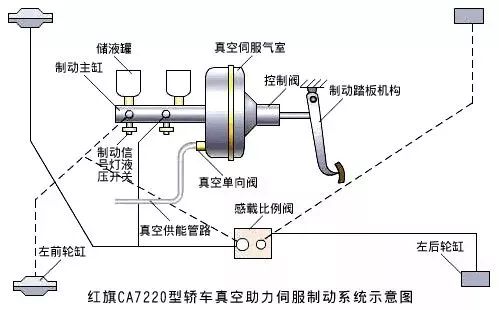
Line control is the most critical and most difficult. To understand the line control, we must first understand the braking principle of the car. Light vehicles are usually hydraulically braked.
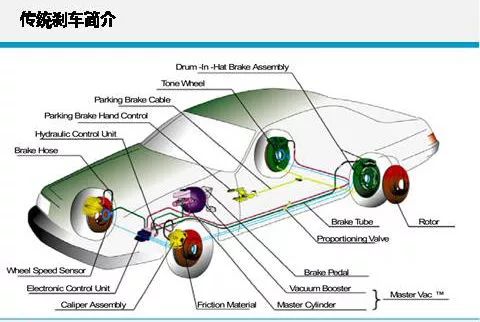
The traditional brake system is mainly composed of a vacuum booster, a master cylinder, a reservoir, a wheel cylinder, a brake drum or a brake disc. When the brake pedal is depressed, the brake oil in the reservoir enters the master cylinder and then enters the wheel cylinder.
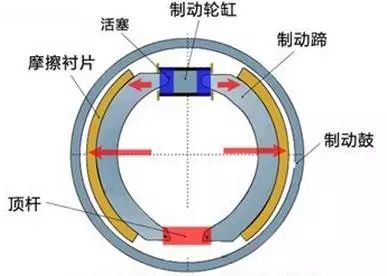
The pistons at both ends of the wheel cylinder push the brake shoes outward and cause the friction plates to friction with the brake drum, thereby generating a braking force.
When the driver depresses the brake pedal, the mechanism hydraulically transmits the force on the driver's foot to the wheel. But in fact, if you want to stop the car, you must have a lot of strength, which is much greater than the strength of the human leg. Therefore, the braking system must be able to amplify the force of the leg. There are two ways to do this: one is leverage; the other is using Pascal's law, using hydraulic amplification. The braking system transmits power to the wheels, giving the wheels a friction force, and the wheels also give a corresponding friction to the ground.
ABS
Having said these, let's talk about ABS.

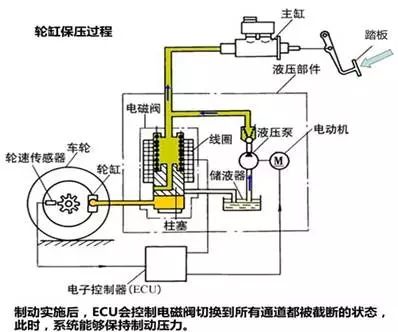
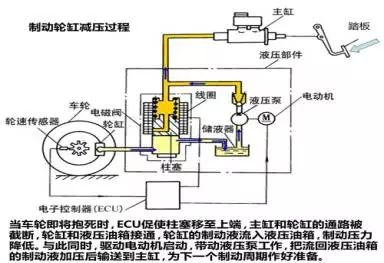
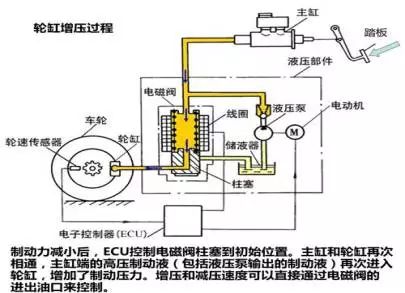
ESP is very close to ABS. The biggest difference from ABS is that ESP can output brake pressure to the wheel cylinder without pressing the brake pedal. ABS can only output pressure from the master cylinder to the wheel cylinder after the brake pedal is depressed. The pressure generator is a motor and a plunger pump. There are 4 more plunger pumps than ABS and 4 solenoid valves, namely VLV and USV.
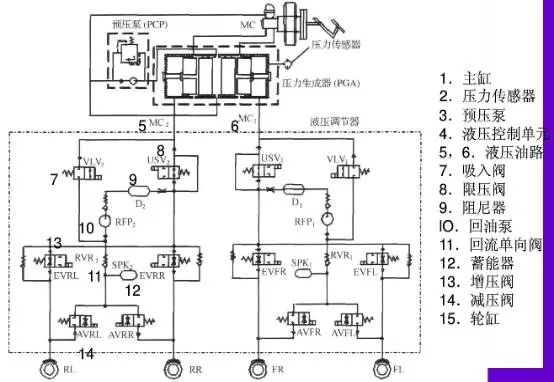
Bosch's ninth generation ESP adds two special features, one is ACC, adaptive cruise, and ESP can partially control the electronic throttle. The other is AEB, which can partially control the braking system.
Some believe that the ESP can control the throttle and control the brakes. It is a good line control system, but it is not. Bosch generally only opens ACC and ESP mass production interface protocols to domestic manufacturers. The maximum brake force is approximately 0.5g. The standard braking force is above 0.8g, which is far from enough.
Secondly, at the beginning of design, the ESP brake control system was only used in a few emergency situations. Frequent use of the ESP control system will lead to serious heating of the piston pump and its precision will decline. As a result, the ESP service life will decline sharply. If ESP is used as a conventional braking system, it may be 1 Months are scrapped. In the end, even if life is not an issue, ESP's pump power is limited, and vacuum assistance is lacking and the response speed is slow.
How to do the conventional line control, this has to start with the vacuum booster.
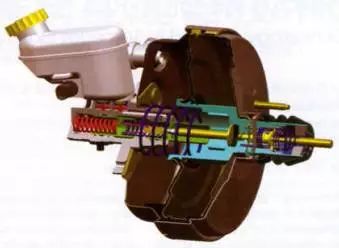
The vacuum booster system controls the vacuum that enters the booster at the same time as the brake, so that the diaphragm moves, and the push lever on the diaphragm is used to assist the manpower to step on and push the brake pedal through the intermodal device. It should be noted that the thrust comes from the pressure difference, not the vacuum. Electric vehicles and hybrid vehicles cannot rely on internal combustion engines to obtain vacuum, and electronic vacuum pumps are required.
The line control motion is extended from the vacuum booster and a vacuum motor booster is used instead of the vacuum booster to propel the master cylinder piston. Due to the narrow space of the vehicle chassis, the size of the motor must be very small. At the same time, an efficient deceleration device is needed to convert the torque of the motor into a powerful linear thrust. The key factor in this is the motor spindle.
Before 1999, when motor technology was not advanced enough, people had to abandon the idea of ​​directly pushing the master cylinder. Instead, use a high-pressure accumulator. This is Mercedes-Benz's SBC, Toyota's EBC system, and TRW's SCB. This system uses a motor to establish hydraulic pressure, and then stores high-pressure brake fluid in a high-pressure accumulator, which is released when braking is required. This system has a complex structure, numerous hydraulic lines, high costs, and low reliability.
Due to the high cost, since 2007, EVP electronic vacuum pumps have begun to replace this high-pressure accumulator design in electric vehicles or hybrid vehicles. EVP is extremely simple. It is to vacuum the vacuum-assisted transposition electronic vacuum pump of the oil tanker. The disadvantage is very high. Obviously, there is almost no energy recovery, a harsh noise will be emitted when braking, and most importantly, it must first depress the brake pedal manually, that is, it is not a wire control but a mechanical brake.
With the development of motor technology, Hitachi's East Machinery agents launched E-ACT, an electrohydraulic control system, for the first time in 2009. It is very simple to say, with direct brushless ultra-high-speed motor and ball screw to directly drive the master cylinder piston to achieve electrohydraulic control, this set of solutions for ball screw machining accuracy is very demanding. The traditional hydraulic brake system has a reaction time of approximately 400-600 milliseconds, and electrohydraulic actuation movement is approximately 120-150 milliseconds, greatly improving safety performance. The 100 km/h brake can be shortened by at least about 9 meters. At the same time used in hybrid and electric vehicles, it can recover almost 99% of the brake friction energy. It is currently recognized as the best braking method. In order to ensure the reliability of the system, this braking system generally needs to add ESP (ESC) system backup.
Bosch was inspired by this, and Bosch was a motor master. After Bosch's efforts, the high pressure accumulator was finally removed in 2013. The master cylinder was driven by a single motor. This is iBooster.
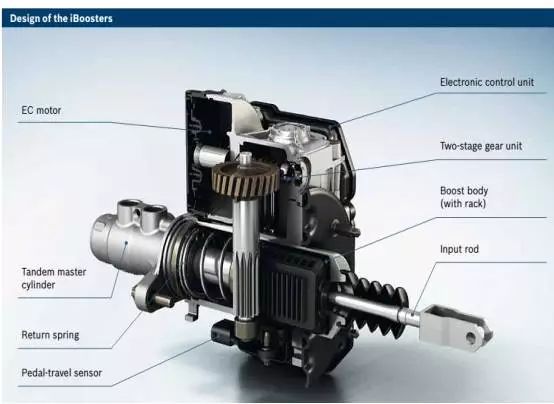
Mainland China and Tianhe (ZF) have also integrated ESCs on this basis. Continental's MK C1 was launched as early as 2011 and is used on the 2017 edition of Alfa Romeo Giulia. TRW launched the IBC in 2012, and the general K2XX platform will be used across the board. By the way, TRW’s IBC technology is not original and is acquired from a small company, but Bosch’s ABS technology is not original.
Neither of these wire control moves are purely wire-controlled motions; they still require the hydraulic system to amplify braking energy. The hydraulic system has a complex structure and the patent threshold is high. In order to break through the blockade of large plants and to simplify the braking system, pure wire control (EMB) has been a hot research field in recent years. The EMB cancels the hydraulic system and brakes the mechanical piston directly with a motor.
Advantage 1: The safety advantage is extremely prominent, and the braking distance is greatly shortened. The EMB response time is approximately 90 milliseconds, which is faster than iBooster's 120 milliseconds.
Advantage 2: No hydraulic system, no liquid leakage. This is especially important for electric vehicles. Liquid leaks can cause short circuits or component failures that can lead to disasters. At the same time, costs and maintenance costs are also reduced.
Disadvantage 1: No backup system, high reliability requirements. In particular, the power supply system must be absolutely guaranteed to be stable, followed by the fault-tolerant capability of the bus communication system. The serial communication of each node in the system must be fault-tolerant. At the same time, the system needs at least two CPUs to ensure reliability.
Disadvantage 2: Brake power is insufficient. The EMB system must be in the hub. The size of the hub determines the size of the motor, which in turn determines that the motor power cannot be too high. However, an ordinary car needs 1-2 KW of braking power. This is a height that cannot be achieved by a small-sized motor. Raising the input voltage is even more difficult.
Disadvantage 3: Bad working environment, especially high temperature. The temperature near the brake pads is up to several hundred degrees, and the size of the motor determines that only a permanent magnet motor can be used, and the permanent magnets will degauss at high temperatures. At the same time, some semiconductor components of the EMB need to work near the brake pads. No semiconductor device can withstand such a high temperature. Due to volume limitations, it is impossible to add a cooling system. At the same time, this is an unsprung element that is violently vibrating. Permanent magnets, whether sintered or bonded, are difficult to withstand strong vibrations. It is also a test for semiconductor components. Need a high-strength protective shell, but the volume inside the hub is very limited, I am afraid it is difficult to do.
Disadvantage 4: The corresponding system needs to be developed for the chassis, which is difficult to modularize, resulting in extremely high development costs.
We believe that unless the permanent magnet material has a major breakthrough, the Curie temperature point will be greatly increased to 1000 degrees Celsius, otherwise EMB cannot be commercialized.
People's increasing demands on braking performance, the traditional hydraulic or air brake system has added a large number of electronic control systems such as ABS, ESP, etc., the structure and pipeline layout become more and more complicated, and the hidden danger of hydraulic (air) circuit leakage. It also increased, and the difficulty of assembly and maintenance also increased.
Brake control is an important part of the automatic driving execution system. The current ADAS and brake system highly-related function modules include ESP (automobile stability system) / AP (automatic parking) / ACC (adaptive cruise) / AEB (automatic emergency system) Move) etc.
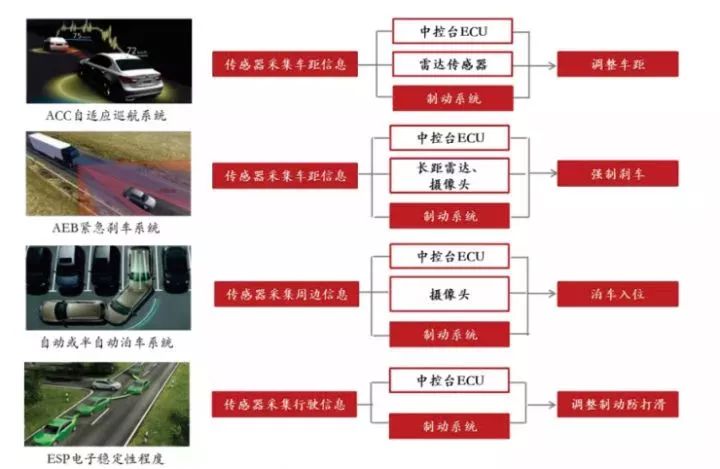
Electromechanical braking (EMB)
If the EHB is called a "wet" brake-by-wire brake system, then the EMB is a "dry" brake-by-wire brake system.
The biggest difference between EMB's full name Electro Mechanical Brake and EHB is that it no longer requires brake fluid and hydraulic components. The braking torque is generated entirely by motor-driven actuators mounted on four tires. Therefore, the corresponding brake cylinders, hydraulic lines, etc. are eliminated, the structure of the brake system can be greatly simplified, and the layout, assembly and maintenance are facilitated. What is more remarkable is that with the cancellation of the brake fluid, the environmental pollution is greatly reduced. Reduced.
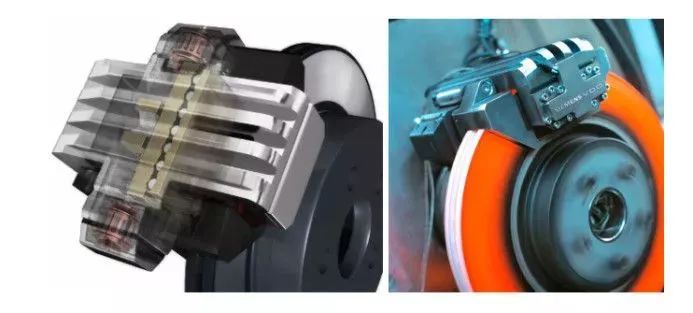
Siemens VDO EMB schematic
Therefore, electromechanical brake systems with relatively simple structures and reliable functions are becoming more and more popular. It can be foreseen that EMB will eventually replace traditional hydraulic (air) brakes and become the future direction of vehicle development.
"Non-burning, nicotine for users, low tar content. As the heating temperature (below 500℃) is lower than the combustion temperature of traditional cigarettes (600-900℃), the harmful components produced by tobacco high-temperature combustion pyrolysis and thermal synthesis are reduced, and the release amount of side-flow smoke and environmental smoke (second-hand smoke) is also greatly reduced."
Heating non - combustion products are electronic devices containing tobacco. When you heat them, they produce a nicotine-containing vapor that you can inhale.
They are different from traditional cigarettes and work by heating tobacco to a very low temperature. Tobacco is heated to 350 ° C in a heat-incombustible device, while traditional cigarettes burn at up to 900 ° C.
Still, the temperature at which non-combustion products are heated is high enough to vaporize and inhale harmful chemicals.
Although both are electronic devices, heated non-combustible products are also different from e-cigarettes or steam devices. These usually use chemical liquids and do not necessarily contain nicotine. E-cigarettes tend to heat liquids to around 250 degrees Celsius to produce vapor.
Hnb Device Oem,Hnb Device Patent,Hnb Device,Hnb Device For Sale
Shenzhen MASON VAP Technology Co., Ltd. , https://www.e-cigarettefactory.com